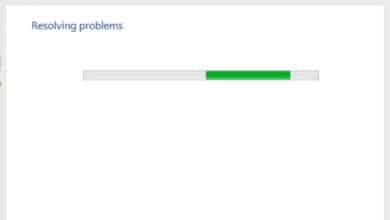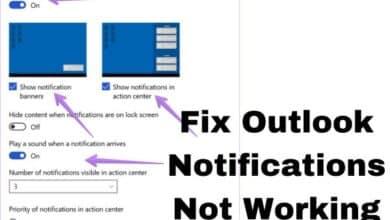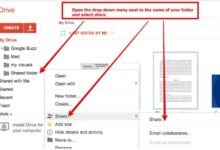
Finding and fixing Google soft 404 errors is one of the technical SEO stages. Soft 404 problems are notoriously difficult to investigate and resolve since, in many circumstances, it’s unclear what the problem is.
You will discover all there is to know about Google soft 404 errors in this tutorial, including what they are, where to look for them, and how to resolve them.
Read on to learn what this implies and how to fix them if you receive soft 404 errors or the Submitted URLs. It seems to be Google Soft 404 errors when you log into your Google search console.
What is a Google soft 404 error?
When a user requests a page that cannot be found or is invalid, the server responds with the HTTP status code 200 OK rather than the appropriate HTTP error code (404 or 410 not found).
In layman’s terms, this means that when a page is faulty, your server delivers a 200 OK code, telling search engines that the page is valid rather than the appropriate error code so that they can ignore it.
Search engines continue to index these pages as a result, and they are listed in the search results.
How to fix Google soft 404 errors
- Check that the page is indeed a soft 404 or a false alarm
- Configure your server to return the proper not found error code (404/410)
- Improve the page and request indexing
- Redirect the page using a 301 redirection
- Keep the page on your site but de-index it from search engines
Check that the page is indeed a soft 404 or a false alarm
The first approach is to see if Google Search Console has mistakenly marked the page as a soft 404 in the past.
- To view the list of impacted pages, select the “Submitted URL looks to be a soft 404” from the Coverage Report.
- Click the “Open in a new tab” button after moving the mouse pointer over a URL.
- Click the VALIDATE FIX button if the page is legitimate and you want it to show up in the search results.
By taking this move, Google will be compelled to re-crawl the page and modify its status code. You’ll receive an email after the procedure is finished, which could take a few days.
Inspect the page and Test Live URL
A different approach is to hover the mouse pointer over a URL and choose INSPECT URL. This will provide you with more details about the page and the REQUEST INDEXING option.
To force Google to reload the report before you do that, click the TEST LIVE URL button.
You might discover that the page is fine in many instances and that no additional action is necessary.
Configure your server to return the proper not found error code (404/410)
When a page is indeed unavailable or invalid, you should set up your website to produce the appropriate HTTP response code (either a 404 or a 410) and submit the page again to Google using the REQUEST INDEXING button of the URL Inspection tool.
Deleting the pages is the simplest way to set up your website to return a 404 error for invalid pages. Your HTTP server will display the 404 pages if the requested URL cannot be found by removing the page.
It is crucial to create a unique 404 page that provides users with options for what to do next. Links to your homepage, top pages, and even a search box can be found on the 404 page, which can aid users in finding what they’re looking for.
Improve the page and request indexing
If a page is available but Google insists that it should be treated as a soft 404, you can edit the page’s content and submit it again to Google using either the VALIDATE FIX or REQUEST INDEXING buttons.
The aforementioned typically occurs when Google tries to delete a page from its index because it has little content.
You may remove the soft 404 error by adding more information to the website and demonstrating to search engines the usefulness of the page.
Redirect the page using a 301 redirection
Redirecting the impacted page to a valid page is another method for resolving a soft 404 error. To accomplish this, add a 301 redirect to yours. htaccess file, informing search engines that the page has moved.
It appears as follows:
301 redirect/soft-404 page https://example.com/new-page-URL
Utilizing the Yoast SEO plugin is another option to implement a 301 redirection.
Make sure the content on the two sites is similar before implementing a 301 redirect.
Using 301 redirections on pages with related content is part of best SEO practices. Pages without similar content should not be redirected; instead, they should be deleted and made to return a 404.
Keep the page on your site but de-index it from search engines
Keep the page on your website as another alternative, but add a noindex directive to the header to tell search engines not to index that specific page.
You may accomplish this by manually inserting meta name=”robots” content=”noindex,follow”/> in the page header or by using Yoast SEO.
When you do this, Google will no longer display the website in the SOFT 404 area of the ERROR report, but you may still see it there.
Read Also: How to Fix the Google Chrome “Free Up Space to Continue” Error Message
How to find soft 404 errors?
The Coverage Report and URL Inspection tools in particular of the Google search console, as well as the 404, Not Found, and Soft 404 errors, are the most trustworthy methods to find 404 errors.
The first step, if you haven’t already, is to register your website with Google. This will get you access to several features that will help you with SEO.
Coverage Report
- Access the Google search bar.
- To read the COVERAGE REPORT, click COVERAGE under INDEX next.
- Check for the following things while the ERROR tab is active:
- It Appears That the Submitted URL Is a Soft 404 Soft 404 Not Found (404)
- To learn more information about the pages that were impacted, click the error description.
URL Inspection Tool
- Using the URL Inspection tool is another method of discovering the HTTP status response code.
- In the URL Inspection tool, type a URL and press enter.
- Click on MORE INFORMATION, then VIEW Crawled Page.
- The HTTP Response will seem as it does in the aforementioned screenshot.
The submitted URL Seems to Be a Soft 404
Google will first indicate that a page is “Submitted URL looks to be a soft 404” before marking it as such.
This is done because soft 404 issues can occasionally be transient; as a result, Google will first mark pages as “looks to be a soft 404” before making a final determination. If the problem persists, the pages will then be designated as Soft 404.
If a page’s status in the ERROR tab is marked as Submitted URL seems to be a soft 404, Google will retry to crawl the website and update its status if it comes back online.
When a page is shown under SOFT 404 in the EXCLUDED tab, Google has either stopped trying to index it because it cannot be located or has been deindexed using the NOINDEX page directive.
Causes of soft 404 errors
You have some pages with little to no content. Because of this, Google believes that the website ought to return a 404 or 410 code rather than a 200 OK code. This can be seen in the empty, content-free tag pages.
Crawling has a momentary problem. Some of the page resources (CSS, JS), which prevent them from loading when Google tries to crawl the page, cause the page to load with no content, leading Google to believe that the page should be a 404.
Google incorrectly flags a website as “looks to be a 404” even though there is no error on the page.
What is important to fix soft 404 errors?
Finding and resolving soft 404 issues is crucial because
It’s a bad user experience
If a user clicks on a link in the search engine results, you don’t want them to go to a page on your website that contains no or little useful material for them.
It’s a bad practice
An appropriate HTTP status code should be returned by a page. It should not provide a 200 in the case of missing, invalid, or nonexistent pages instead returning a 404/410 (not found) or a 301 (moved) (success code).
Your crawl budget gets wasted
Search engines spend more time scanning and indexing soft 404 pages than they do your key pages.
What is the difference between 404 Not Found and soft 404 errors?
The distinction between 404 not found and soft 404 errors are that the former occurs when a page cannot be located and an HTTP status code of 404 or 410 is returned (which correctly corresponds to not found).
When a page cannot be located, a soft 404 error occurs, but instead of delivering the HTTP status code 404, the page instead displays the deceptive 200-success code.
In both instances, the page response code should have been 404, but this is not the case with soft 404 errors, to put it simply.
Another significant distinction is that while soft 404 pages are indexed by search engines and may show up in search results, 404 pages are not and won’t appear in search results.
404 Errors and SEO
There are legitimate situations when 404 pages are anticipated and normal. For instance, you can show the user a 404 page when a product is no longer offered to inform them that the item in question is no longer accessible.
The desire to entirely exclude a page from the search results is another scenario. Search engine spiders can be informed that a page has been permanently destroyed by returning a 404 status code.
The problem with soft 404 errors is that sometimes the page is valid but Google believes it isn’t, and other times the page is invalid yet your server returns 200 OK.
In some circumstances, it is preferable to look into the causes of the mistakes and correct them.
Having Google 404 errors on your website is generally not a smart idea if you want to maximize your crawl budget, prevent perplexing search engines, and provide a positive user experience.
How do I fix Error 404 on Google?
By pressing F5, selecting the refresh/reload option, or trying the URL from the address bar again, you can try the website again.
Check the URL for mistakes.
In the URL, advance one directory level at a time until you locate something.
Use one of the many search engines to look up the page.
What does a soft 404 error mean?
A 404 error occurs when a page is unavailable and the server notifies the browser that the page cannot be found by sending the appropriate HTTP status code — a 404 Not Found — to the browser. When a server gives a 200 OK status for a requested page yet Google believes that the page should return a 404, this is known as a soft 404 error.
Why is my Google site getting a 404 error?
This error message will appear if you tried to access a website or page that doesn’t exist or that you are not authorized to view. If you use Google Sites for work or education, ask your administrator for assistance. On the Google Sites Help Forum, you may also request assistance.
Where can I find soft 404 pages?
Both soft and hard 404 errors are included in this. Select the Excluded tab under Coverage after logging into the Search Console. A list of both hard and soft 404 problems, denoted as Not found (404) and Soft 404, will be displayed. To get a complete list of pages producing 404 errors, click on each.
How do I fix a redirect page?
Any of the following circumstances could result in a “Page with redirect” error: Your website was upgraded to a Premium Plan. Your free Wix URL is being redirected to the URL of your own custom domain. In the URL Redirect Manager, you configure 301 redirects for these pages.
- How to Fix Keyboard Not Working in Google Chrome
- How to Remove Personal Information From Google?
- How To Disable Video Previews In Google Photos
Conclusion
This guide describes Google soft 404 issues and how to locate and resolve them. The server replies with the HTTP status code 200 OK rather than the proper HTTP error code when a user requests a page that cannot be found or is incorrect (404 or 410 not found). By clearing them from your server’s cache, you can configure your website to display a 404 error for pages that are invalid or unavailable.






